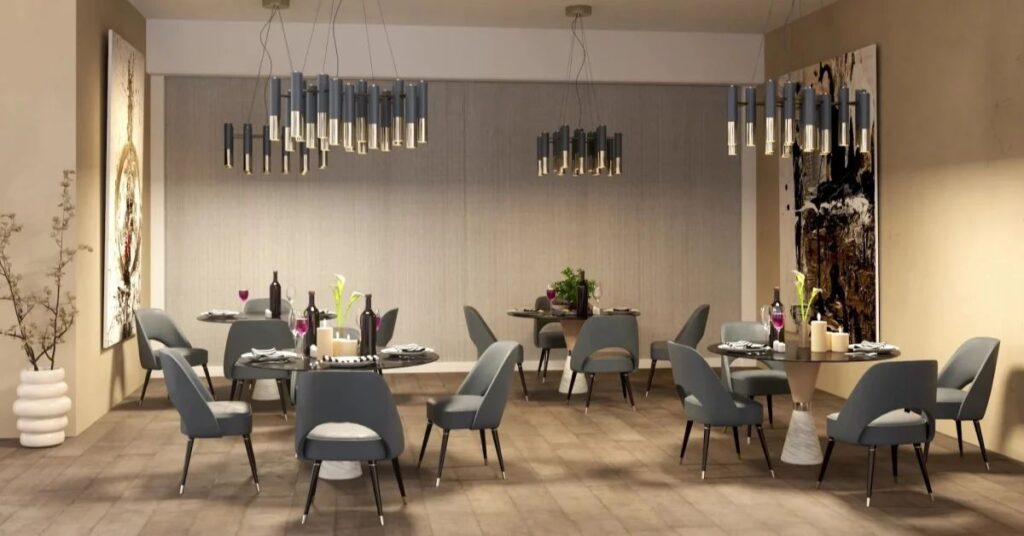There’s a quiet trend happening in the restaurant world, and it’s got nothing to do with truffle oil or wagyu beef. It’s all about space. More specifically, how restaurants are rethinking the way they design private dining rooms—especially for larger groups who want something more than just four walls and a long table.
People are gathering more intentionally now, for great dining near me. It’s not just about eating out, it’s about celebrating something—a birthday, a work win, a reunion, or maybe just being in the same place at the same time for once. And that shift is pushing restaurants to create spaces that feel, well, more human.
Big Room? Sure. But Not Just Big.
First off, yes—size matters. A proper space for 15, 20, even 30 people needs to have enough breathing room so folks aren’t elbow-to-elbow. But it can’t just be big. It needs to work.
People don’t just sit. They stand, walk around, switch seats, head to the bar, pop out for a smoke, come back in. A good room has to accommodate all of that without turning into a game of human bumper cars. The layout has to feel relaxed, not crammed or overly formal.
And it’s not always a straight banquet table anymore. Some places are experimenting with clusters of round tables, modular seating, or U-shaped setups that encourage conversation without making guests feel like they’re part of a board meeting. Movement matters more than ever.
Not Just Four Walls and a Door
Gone are the days when private dining rooms felt like hotel conference leftovers. Beige, generic, and borderline sad. Now? Restaurants are stepping it up.
The best private rooms feel like they were meant for gathering. Think warm lighting, textured walls, maybe even some exposed brick or artwork that doesn’t scream “corporate.” Some have fireplaces. Some have bold, moody wallpaper. Others go for that clean, airy look with plants and lots of natural wood. The vibe depends on the place, sure—but the idea is always the same: make the space feel inviting and personal.
People walk in and instantly relax. That’s what a great design does—it lowers your shoulders without you even realizing it.
Noise Can Kill the Mood—Or Make It
Here’s a tricky one: sound.
Anyone who’s ever tried shouting across a too-loud restaurant table knows how fast that ruins a night. But silence isn’t the goal either. That’s weird too.
Restaurants are finally investing in things like acoustic panels, curtains that do more than just look pretty, and soft materials that keep sound from bouncing off the walls. Some even install discreet speaker systems so the room can have its own vibe without leaking into the rest of the restaurant.
It’s subtle stuff, but it makes a world of difference. You want to hear your friend’s toast—but also the music playing softly in the background. You want laughter to echo just enough to feel warm, not like chaos.
Tech That Helps, Not Takes Over
Technology in these rooms? It’s getting smarter—but not in your face.
No one wants a giant screen blinking at them while they’re trying to enjoy crab cakes. But a sleek, hidden TV that pops out for a corporate slideshow? A mic that doesn’t squeal during speeches? Lighting you can dim without hunting for a wall switch? That’s the good kind of tech. And it should feel like it was always part of the room, not slapped on last minute.
The trick is making it invisible until it’s needed. When it’s done right, the room can swing from casual to formal to celebratory without skipping a beat.
Make It Easy to Move (And Breathe)
Another underrated detail? Flow.
A well-designed private dining room or doesn’t feel like a cage. Guests should be able to move around, grab a drink, find the restroom, or sneak out to take a call—without having to climb over chairs or awkwardly squeeze past servers.
Some restaurants with outdoor seating near me even go so far as to have a private entrance or access to an outdoor patio. It’s about freedom—feeling like the space is yours, not like you’re borrowing someone else’s.
Let Guests Make It Their Own
Maybe the best thing happening in private dining design? Flexibility.
Some spaces come with blank slates—shelves that can be decorated, walls that can hold custom signage, or furniture that moves to fit the party’s needs. It’s not about a one-size-fits-all setup anymore. It’s about making it personal.
Whether it’s a retirement dinner with a slideshow of memories or a surprise party with balloons and banners, the best rooms are the ones that adapt. That lean in. That let people bring in a piece of their story and plant it in the space for the night.
In the End, It’s All About the Feeling
Design trends come and go. But the way a room makes people feel? That sticks.
Restaurants that are getting private dining right aren’t just slapping paint on the walls or upgrading their chairs. They’re thinking about what it means to bring people together in 2025—what makes them laugh, connect, linger a little longer.
And that’s the goal, isn’t it? To create a space that doesn’t just hold a party, but becomes part of the memory.
Also Read: A Sushi Order Topped with Salmon NYT: A Joy in Every Bite

